Andrew Copp’s burgeoning partnership with Artemi Panarin is good news for the New York Rangers as they move down the stretch of this resurgent season. Although Ryan Strome is now rounding out the line with that pair after his Tuesday return, the new union might not represent the best development for Strome’s future with the team after this season.
Yes, Panarin and Copp are getting to know each other, with Copp having filled the center spot vacated by Strome while the latter recovered from an undisclosed lower-body injury. The Breadman and Copp had a hand in four combined goals as the Blueshirts went 2-1-1 while Strome sat out – with one of Copp’s goals being a game-winner, the other tying a game and sending it to overtime to give the Rangers a point.
That’s not to say there hasn’t been a learning curve in meshing with Panarin’s textured, multi-dimensional game.
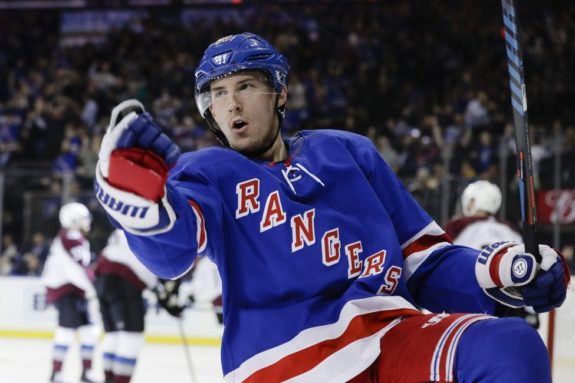
” … I’m figuring out when (Panarin) wants me to drive the net, when he wants me to pull up, and especially in that left-D, one-timer seam,” Copp said. “And kind of coming through that neutral zone, too, he loves the puck on his stick, he loves being dangerous. A lot of the time it’s creating time and space for him.” (From ‘Why the Rangers’ Playoff Hopes May Hinge On the Fit Between Andrew Copp and Artemi Panarin’, New York Post, 4/5/22)
Yet Copp, who just joined the team at the March 21 trade deadline, is figuring Panarin out, and vice-versa. One of the unintended consequences of that development may not bode well for Strome’s long-term prospects in a Blueshirt.
Panarin’s Rangers Rise Coincided With Teaming up With Strome
Strome, of course, has melded perfectly with Panarin since the duo was formed early in the 2019-20 season, Panarin’s first on Broadway. After an early experiment with Mika Zibanejad as his center, Strome moved into the middle on Panarin’s line, and gave then-coach David Quinn every reason to leave him there. Despite the season being shortened to 70 games due to the COVID-19 pandemic, Panarin posted a career-high 95 points in 69 games, while Strome also set a career high with 59 points in 70 contests.
The following season proved to be an eventful one for the wrong reasons for Panarin, who was limited to 42 games. Yet he still totaled 58 points for a 1.38-points-per-game average – the highest of his career, edging out his average of 2019-20. Strome excelled again as Panarin’s right-hand man with 49 points while playing all 56 contests of the shortened season.
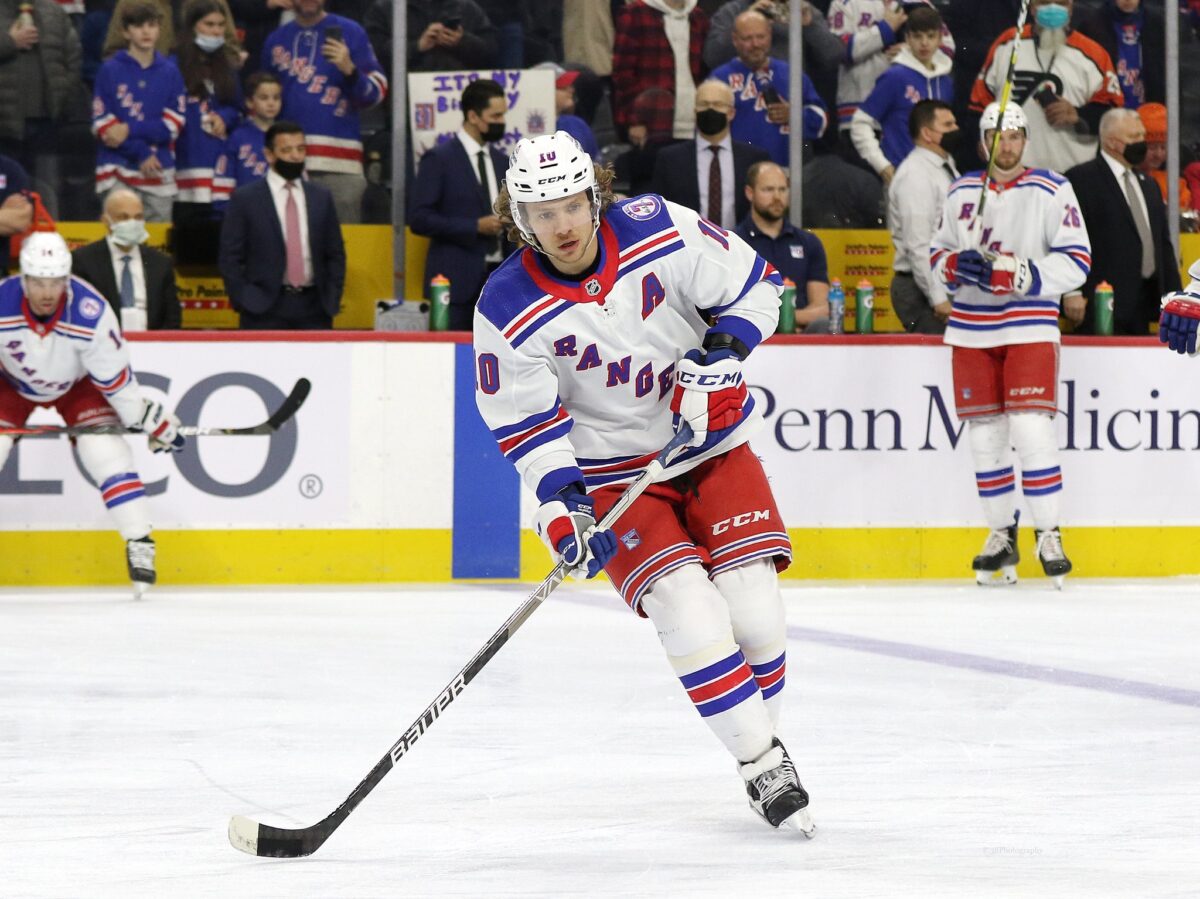
This season has been more of the same. Panarin’s 84 points in just 66 games are the third-highest total of his seven-year career, and his 65 assists are a career best with 11 games remaining. It seems likely he’ll at least surpass his 87-point effort of 2018-19 with the Columbus Blue Jackets, even if matching his output of 2019-20 seems unlikely (although hardly impossible, considering Panarin averages well over a point per game).
The Breadman’s ascendance to a higher level since arriving in New York, occurring mostly while teamed with Strome, has created a sense of mystery over the past three seasons. Is the primary reason for Panarin’s rise his synergy with Strome, the latter’s game perhaps being tailor-made for combining with the former Blue Jacket and Chicago Blackhawk? Have the bright lights of Broadway, which he aggressively sought out as a free agent, brought out the best version of Bread? Was it more organic and less complicated, Panarin simply achieving his full potential at an age (he was 27 when he signed with the Rangers) when many players enter the prime of their careers?
Perhaps it’s a little bit of each of those. Yet in seemingly not missing a beat with Copp as his center over the short stretch, it appears that having Strome alongside him might not be as compelling a factor as previously thought.
Panarin is a points machine, his production so consistent that it sometimes appears routine. That begs the somewhat blunt, uncomfortable and ongoing question: Does Panarin need Strome, or does Strome – viewed as a player drafted too high when he was taken fifth overall by the New York Islanders in 2011 – need Panarin?
Make no mistake, Strome has turned himself into a quality player, some of the high-end skills that compelled the Islanders to select him near the top of the draft having emerged since he joined the Rangers in a lopsided trade in Nov. 2018. His effect upon the Rangers’ slumping power play upon returning in Tuesday’s 3-1 victory over the New Jersey Devils was obvious, as he scored with the man advantage as the Blueshirts went 2-for-3 on the power play after going 4-for-23 over the previous 10 games. Strome went back to his usual spot in the middle with Panarin, with Copp shifting to the right side on the line.
Does Strome Contribute Enough Beyond His Bond With Panarin?
The Rangers, though, will have to weigh giving big money and years to the pending unrestricted free agent who turns 29 in July, committing to him as their second-line center as they enter what should be a window of Stanley Cup contention. Does Strome do enough to warrant such a course of action? Perhaps answering that question isn’t easy, and won’t be.
He isn’t adept on faceoffs, averaging 44.8 percent this season and 45.3 for his career, which means that’s the number he’ll likely be around going forward. While he’s probably a better defensive player than advertised – his Corsi for percentage has been above 55 the past two seasons, though that again could be Panarin’s influence – coach Gerard Gallant doesn’t use him regularly on the penalty kill. He isn’t fast and physicality really isn’t part of his game.
Copp, by contrast, is big, speedy, wins faceoffs (52 percent for his career), is an effective penalty killer, forechecks hard and engages along the walls – in addition to being a scorer, with career highs of 16 goals and 28 assists this season. The 27-year-old’s point total has risen for four straight seasons.
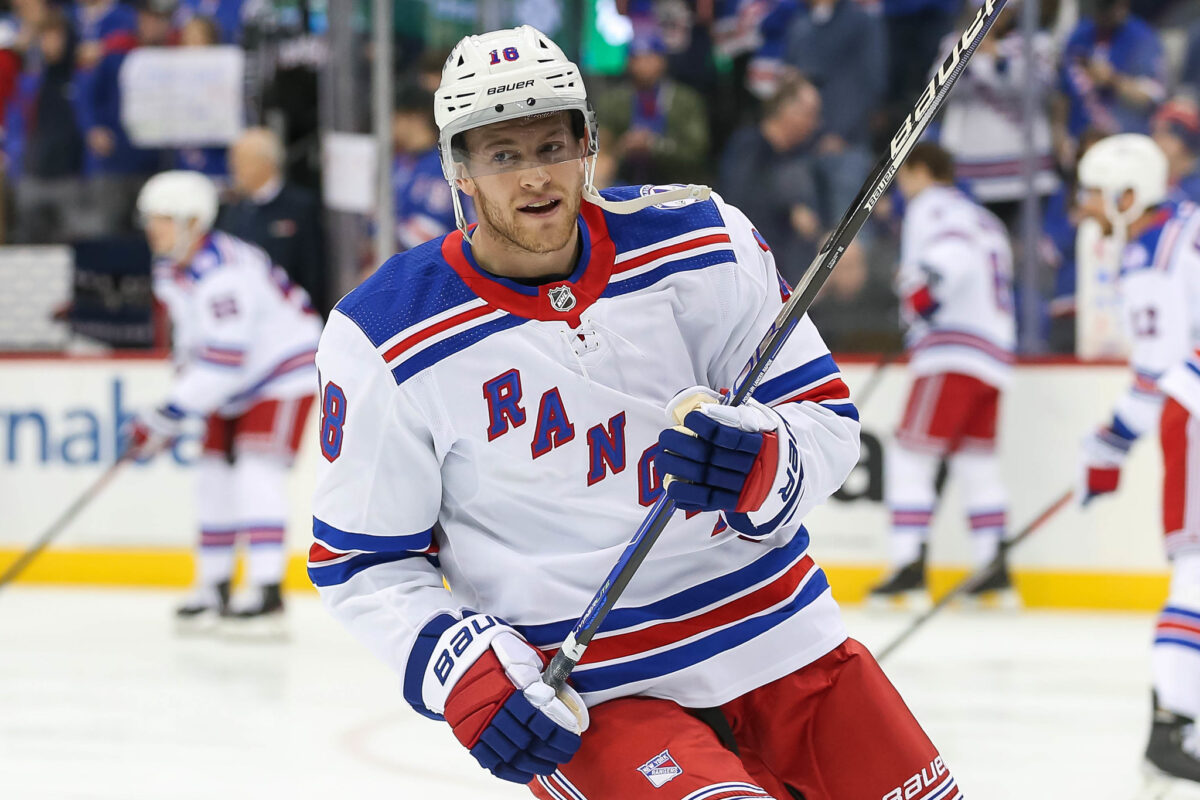
Copp is also a pending UFA, and if he continues to produce down the stretch and into the playoffs, could be offered a dollar figure this summer which the Rangers aren’t comfortable paying. This isn’t simply a choice between Copp and Strome – if the Rangers are in fact interested in retaining their trade-deadline acquisition.
Instead, Copp’s ability to connect with Panarin should make the point clear: The Blueshirts, facing a serious salary-cap crunch over the next few seasons, realistically have Strome’s current salary slot of $4.5 million and a little bit more with which to pay a second-line center. Re-signing Copp and Strome just doesn’t seem feasible.
So, does Strome’s chemistry with Panarin provide enough value to justify extending the partnership, or should the club use those limited dollars to try and keep the more versatile Copp? Or would pursuing someone like Copp’s former Winnipeg Jets teammate Mark Scheifele be the better play as the front office looks to build a champion?
Related: Rangers Need to Re-Sign Copp During the Offseason
Put another way: Is Strome a good enough player without Panarin to be paid between $5-6 million per season for five or six years (and that might assume Strome taking a discount)? Would he even approach his point totals of the past three seasons if he wasn’t paired with one of the NHL’s best distributors?
Strome was viewed as a stopgap/depth player when former general manager Jeff Gorton acquired him from the Edmonton Oilers for Ryan Spooner. He turned out to be much more, becoming part of the fabric of the club, liked and respected by his teammates and earning an “A” on his jersey as one of six alternate captains this season.
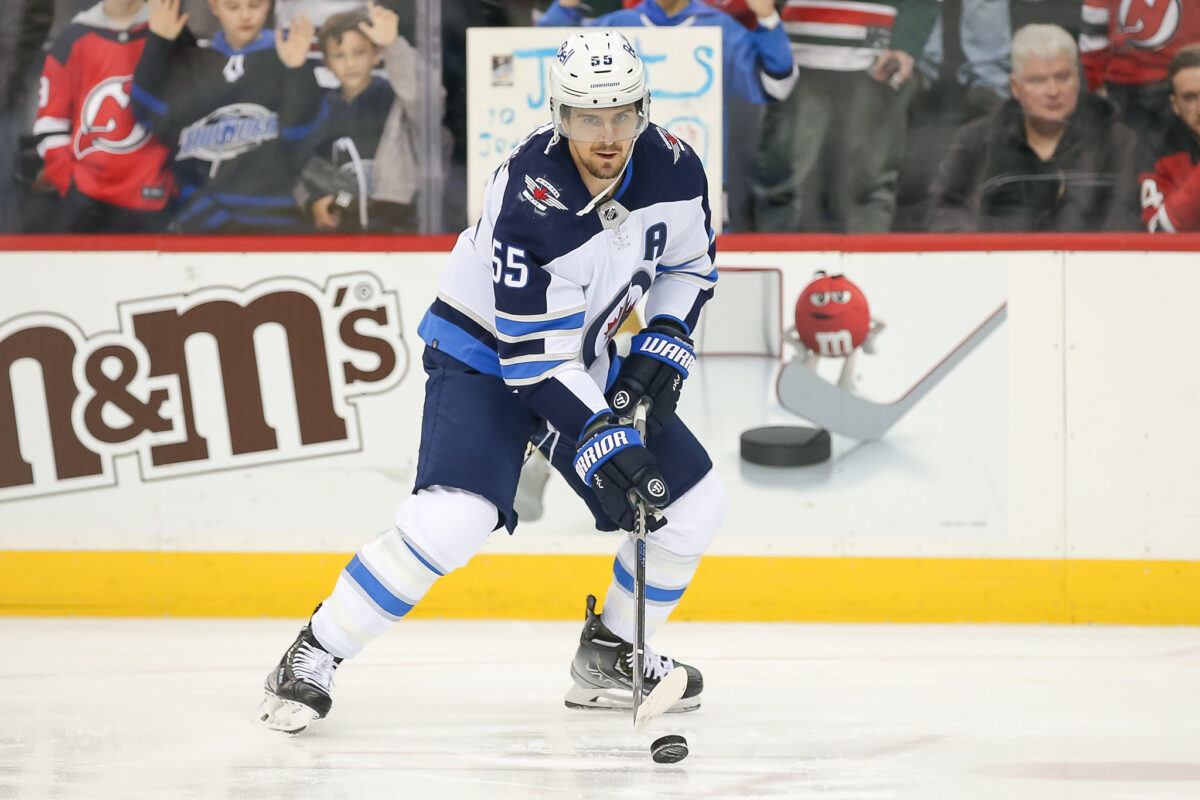
Yet Strome might prove to be just that – a bridge between the Blueshirts’ arduous rebuilding program and a return to Cup contention. It would seem foolish for general manager Chris Drury to not at least explore potential options to upgrade the center spot behind Mika Zibanejad, given the lack of organization depth behind him.
Panarin Has Succeeded With Stars and Journeymen as His Center
The undrafted Panarin became a star playing with centers such as journeyman Artem Anisimov in Chicago, as well as more highly-regarded players like Pierre-Luc Dubois in Columbus. It doesn’t seem to matter. Panarin is good for 80-plus points per season, and he’s likely to reach 90 for the second time in three seasons in New York in 2021-22.
Discounting the effect of Strome, with whom Panarin has formed a bond on and off the ice and has made clear his affinity for as a linemate, is potentially dangerous. Yet Panarin’s body of work suggests that he’s so dynamic offensively, elevating the play of anyone he’s played with, that his production wouldn’t suffer much of a hit with a different center.
If that’s the case, the Rangers would have the option to improve their roster by adding a better player than Strome – or keep a different one in Copp – to the mix in the offseason, while bidding farewell to a player who’s performed extremely well for them, but simply might not be a Stanley Cup champion-caliber second-line center.
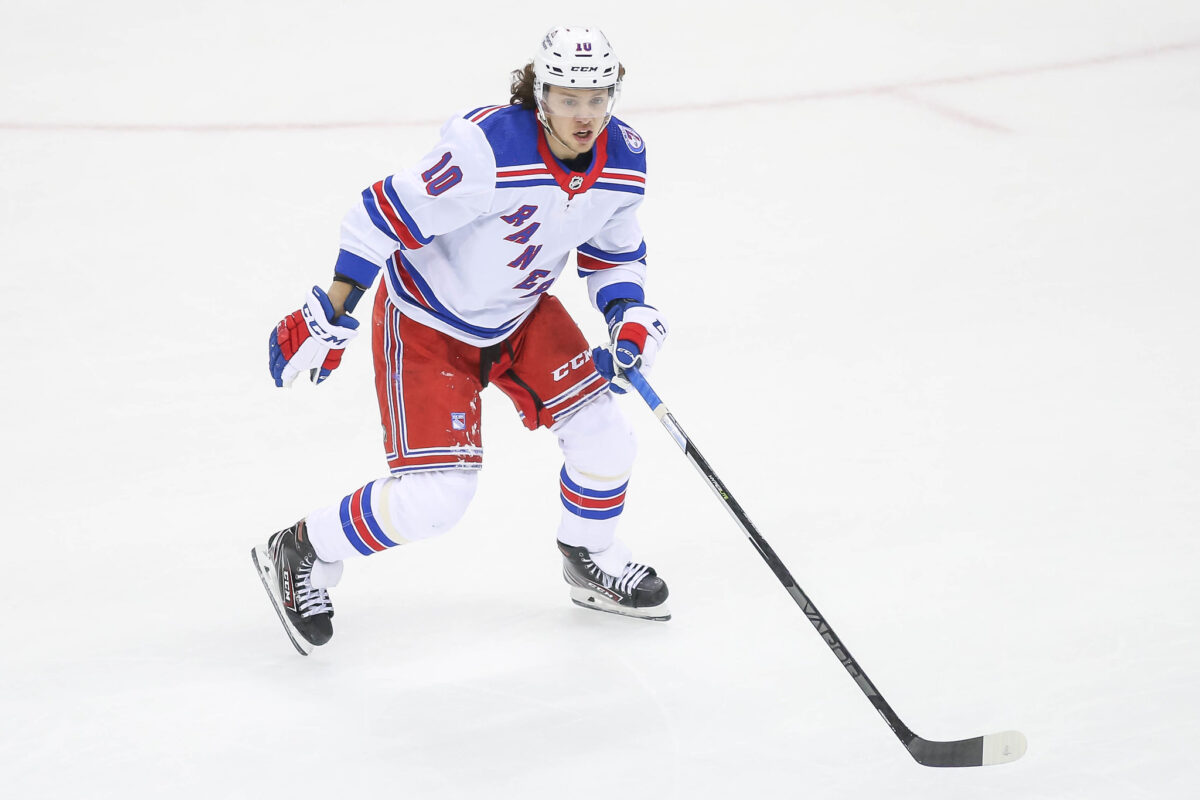
That might sound a little harsh, and moving on from Strome might upset Panarin. Yet Drury has to focus on what’s best for his club. The pending opening at 2C is a little scary for an organization starved for centers, but it also represents a golden opportunity for the Rangers to substantially upgrade the team by letting a good soldier like Strome walk.
“He’s a big part of our group, obviously,” Gallant said upon Strome’s return. “Power-play unit and playing with Panarin on that line, makes a big difference for our team. He’s an important player for us.” (From ‘Rangers’ Ryan Strome Returns Back to Second-Line Spot’, New York Post, 4/5/22)
For how much longer, though? The bet here is Panarin would make it work just fine with a new running mate in the middle next season. After all, the star winger has done it before.